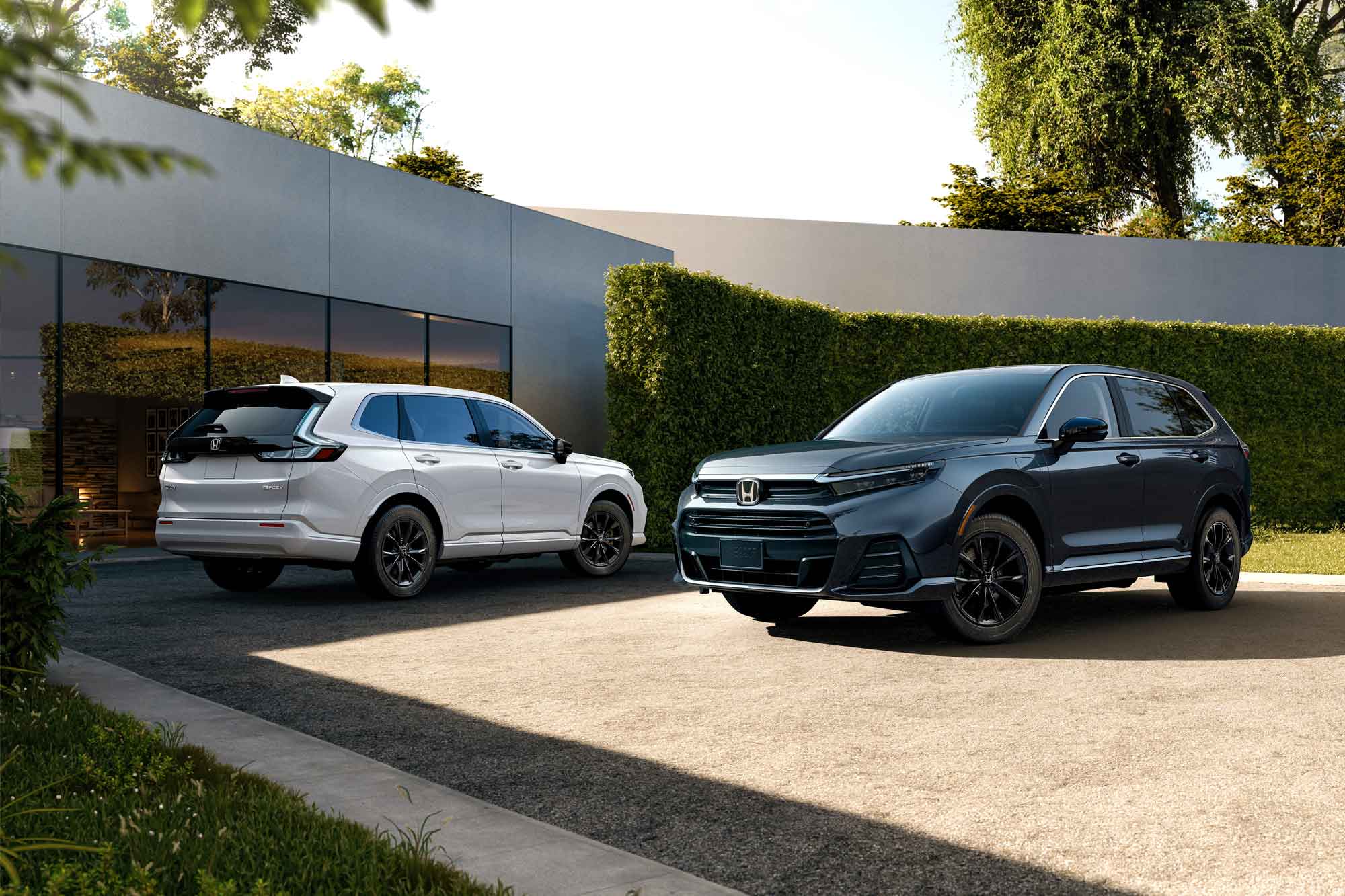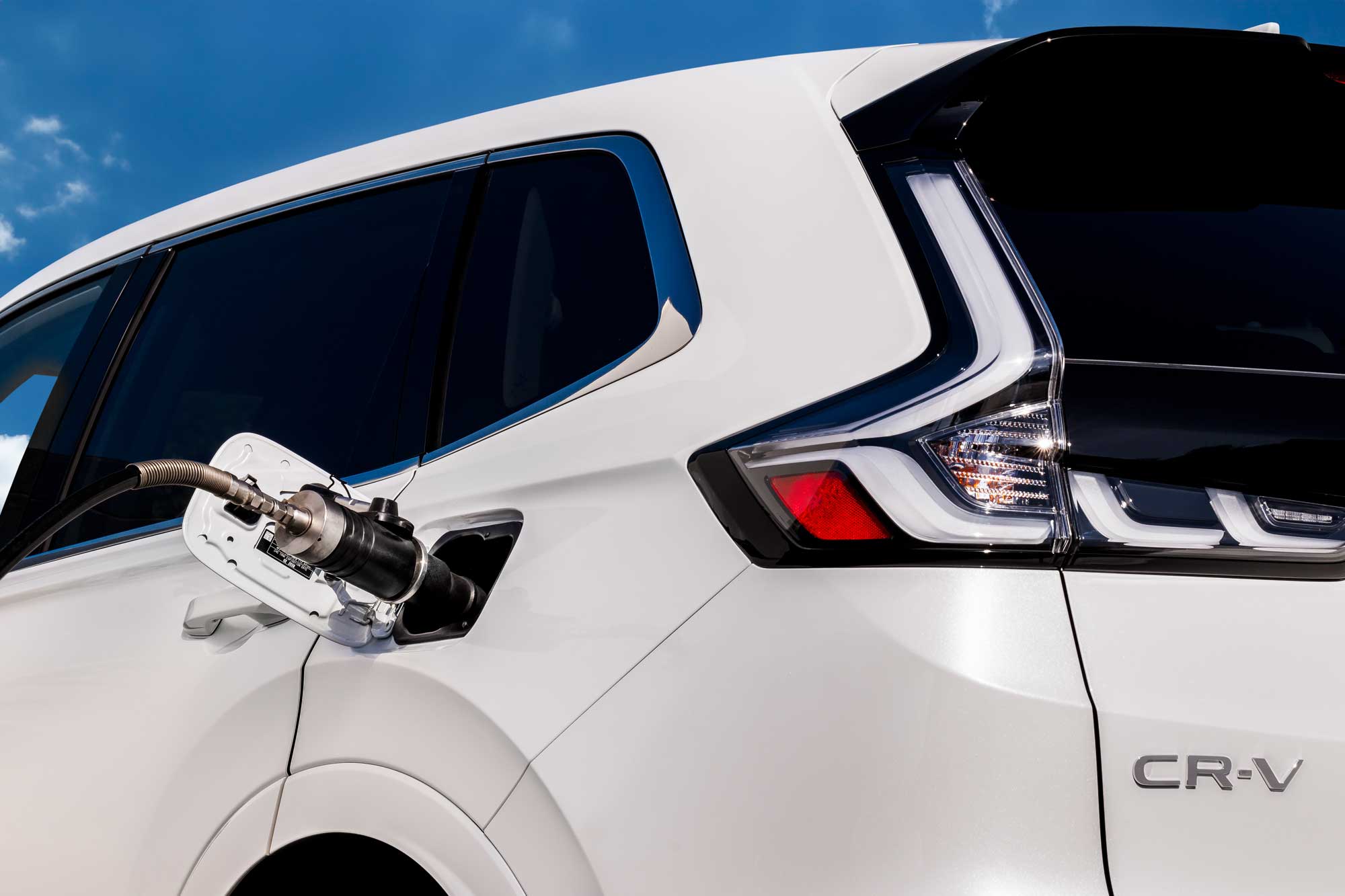2025 Honda CR-V e:FCEV First Look: Honda’s Hydrogen Hedge
Honda says battery-electric and fuel cell electric vehicles will represent 100% of Honda automobile sales by 2040.
 Honda
Honda
Honda is diversifying its zero-emissions powertrain lineup with a new version of its CR-V compact crossover that’s powered by a combination of batteries and the company’s latest hydrogen fuel cell technology. Billed as the United States' first plug-in hydrogen fuel cell electric vehicle (EV), the CR-V e:FCEV is scheduled to hit the market later in 2024 — though it will only be available to lease and only in select California markets.
 Honda
Honda
Honda CR-V e:FCEV Offers Up To 270 Miles Of Emissions-Free Range
The Honda CR-V e:FCEV is powered by a single electric motor mounted at its front axle. That means the CR-V e:FCEV is offered exclusively with front-wheel drive; no all-wheel drive version has been announced as of February 2024.
The CR-V e:FCEV’s electric motor is rated at 174 horsepower and 229 lb-ft of torque. For reference, the gas-electric hybrid version of the CR-V makes 204 horsepower and 247 lb-ft of torque.
Like a conventional plug-in hybrid, the CR-V e:FCEV is capable of operating as a pure EV. When fully charged, Honda says the CR-V e:FCEV’s 17.7kWh onboard battery pack can power the crossover for up to 29 miles. When those electrons are depleted, you can plug-in to charge-up, or the vehicle will automatically switch to hydrogen power, extending the CR-V e:FCEV’s total range to 270 miles. Overall, the CR-V e:FCEV is rated at 61/52/57 MPGe city/highway/combined.
The CR-V e:FCEV’s hydrogen fuel cell module is a second-generation design that was co-developed with General Motors. Compared to the previous system, Honda says the latest version, which is produced in Michigan, delivers improved durability and higher efficiency while cutting costs by about two-thirds. The fuel cell’s only emission is water vapor.
In addition to powering the vehicle itself, the fuel cell aboard the e:FCEV can also act as a mobile power station for devices like small appliances, power tools, and portable air conditioners. The 110-volt power outlet can deliver up to 1,500 watts of external power.
 Honda
Honda
2025 Honda CR-V e:FCEV Brings Aero Styling to the Popular CR-V
The e:FCEV is largely based on the conventionally-powered CR-V, but the hydrogen model does boast a few unique design upgrades.
The front fascia of the CR-V e:FCEV has been tweaked with a lower grille and longer hood for maximum aerodynamics. A restyled bumper is present out back, and the CR-V’s signature vertical taillights have been turned white for the hydrogen treatment. The CR-V e:FCEV is equipped with a full floor undercover to further enhance aerodynamics.
Black-finished 18-inch wheels are fitted as standard, as is a revised suspension that the automaker says promises to deliver the same driving dynamics as gas-versions of the CR-V.
The e:FCEV is based on the CR-V’s top Touring trim. As such, the e:FCEV is well equipped, with standard amenities that include a 10.2-inch digital gauge display, a 9.0-inch touchscreen infotainment system running wireless Apple CarPlay and Android Auto, a 12-speaker Bose audio system, wireless phone charging, a heated steering wheel, power-adjustable heated front seats, dual-zone climate control, and the Honda Sensing suite of safety and driver-assistive technologies. In keeping with its environmentally friendly theme, the CR-V e:FCEV’s interior is upholstered in animal-free leather.
The driver can alter the CR-V e:FCEV’s driving experience via four selectable modes: Normal, Eco, Sport, and Snow.
The Ohio-Built CR-V e:FCEV Will Be Available For Lease In California
The 2025 CR-V e:FCEV is set to be built at Honda’s Performance Manufacturing Center in Marysville, Ohio. That’s the same facility that produced the Acura NSX hybrid sports car.
Despite its midwestern roots, the CR-V e:FCEV will be available in California later in 2024, where it will qualify for the state’s single-occupant HOV lane access. Honda will exclusively lease the CR-V e:FCEV, so there is no option to buy it outright. As of February 2024, lease terms have not been announced.
 Honda
Honda
Honda To Lean On Hydrogen For A Zero-Emissions Future
The CR-V e:FCEV is intended to diversify Honda’s powertrain portfolio as it, along with the vast majority of global automakers, transitions to a zero-emission future. Battery-electric vehicles like the Prologue will be the main pillar of Honda’s effort to eliminate emissions, but fuel cells will also play a role. By 2040, Honda said electrics and fuel cell vehicles will represent 100% of the company’s automobile sales.
Written by humans.
Edited by humans.
 Drew Johnson
Drew JohnsonI have been a professional automotive enthusiast since 2007, featured on several nationally-recognized sites. I attended Miami University, where I earned a business degree. Car nut at heart.
Related articles
View more related articles